INSTITUTIONAL TRANSFORMATION THROUGH STANDARDIZED CLINICAL ACTION
A KEY TO ACTUALIZING THE POTENTIAL FOR HOMOEOPATHIC RESEARCH*
Latha Devarajan, MD (Hom) 1*, Kumar M. Dhawale, MD (Psych), DPM, MF Hom (London) 2
1 Academic Coordinator, MLDMHI Bengaluru and Senior Research Fellow, EMR Multicentric Project on Scholastic Difficulties
2 Director, Dr. M. L. Dhawale Memorial Homoeopathic Institute (MLDMHI)
*Address of correspondence: Dr Latha Devarajan
Email: lathadevraj@hotmail.com
How to cite this article:
Devarajan L, Dhawale KM. Institutional transformation through standardized clinical action: a key to actualizing the potential for Homoeopathic research. Journal of Integrated Standardized Homoeopathy (JISH) 2019; 02(02)
Received on: May 26, 2019
Accepted for Publication: June 20, 2019
Abstract:
This paper explores the experience of the clinicians of the MLDMHI, Bengaluru, over the past 15 years in various clinical settings and the benefits accrued to them through sustained attention, orientation, and training regarding the use of the Standardized Case Record© in the research setting. The role of all these factors in team building is also explored.
Introduction
The Standardized Case Record© (SCR) has been used in the Institute of Clinical Research (ICR) affiliated clinics, educational institutions, and research projects since the last 45 years. The SCR yields numerous clinical and educational benefits in conducting research (1-3). Some of the benefits are –
- accurate documentation of data
- standardized data processing for objectively validated conclusions in the choice of Homoeopathic remedy and other ancillary measures
- a method to train students in data collection and processing
- a tool for clinical and administrative audits
Naturally, these benefits are invaluable for conducting Homoeopathic research, which is a core institutional activity. The four extra-mural research (EMR) projects completed by the Dr M. L. Dhawale Memorial Trust are a testimony to the SCR’s importance (4-9). However, its role in team building, an activity vital to Institutional Development, has not been explored.
The Launch of MLDMHI, Bengaluru: The first steps
A group of Homoeopathic clinicians in Bengaluru were interested in the ICR methodology and had been participating in the ICR’s educational programmes. In 2003, they could establish a formal extension of the MLDMHI, a section 25 company, in Bengaluru.
Clinical /Community Activities:
Ravugudulu village, situated 30 kms away from the city, had no health care facilities for 14 kms (distance from the closest PHC). The panchayat head (a patient of Dr. Ramdas) invited the MLDMHI to start a clinic.
Over the last 15 years, the Institute has broadened and deepened its activities, with several clinics and 2 mobile units covering over 30 villages and catering to 1200 patients per month. It conducts regular camps, provides integrated health care at Government schools, and has a tribal outreach programme at Kabini (around 200 km from Bengaluru) in collaboration with the Pipal Tree Trust, a community-based organisation that works with farmers and has an institute – ‘Fireflies’ (which has our clinic in its premises).
The community team has systematically trained 27 community health volunteers (CHVs) and 3 multi-purpose workers (MPWs) from 25 villages. They have also created a self-help groups Sutra with the CHVs’ help.
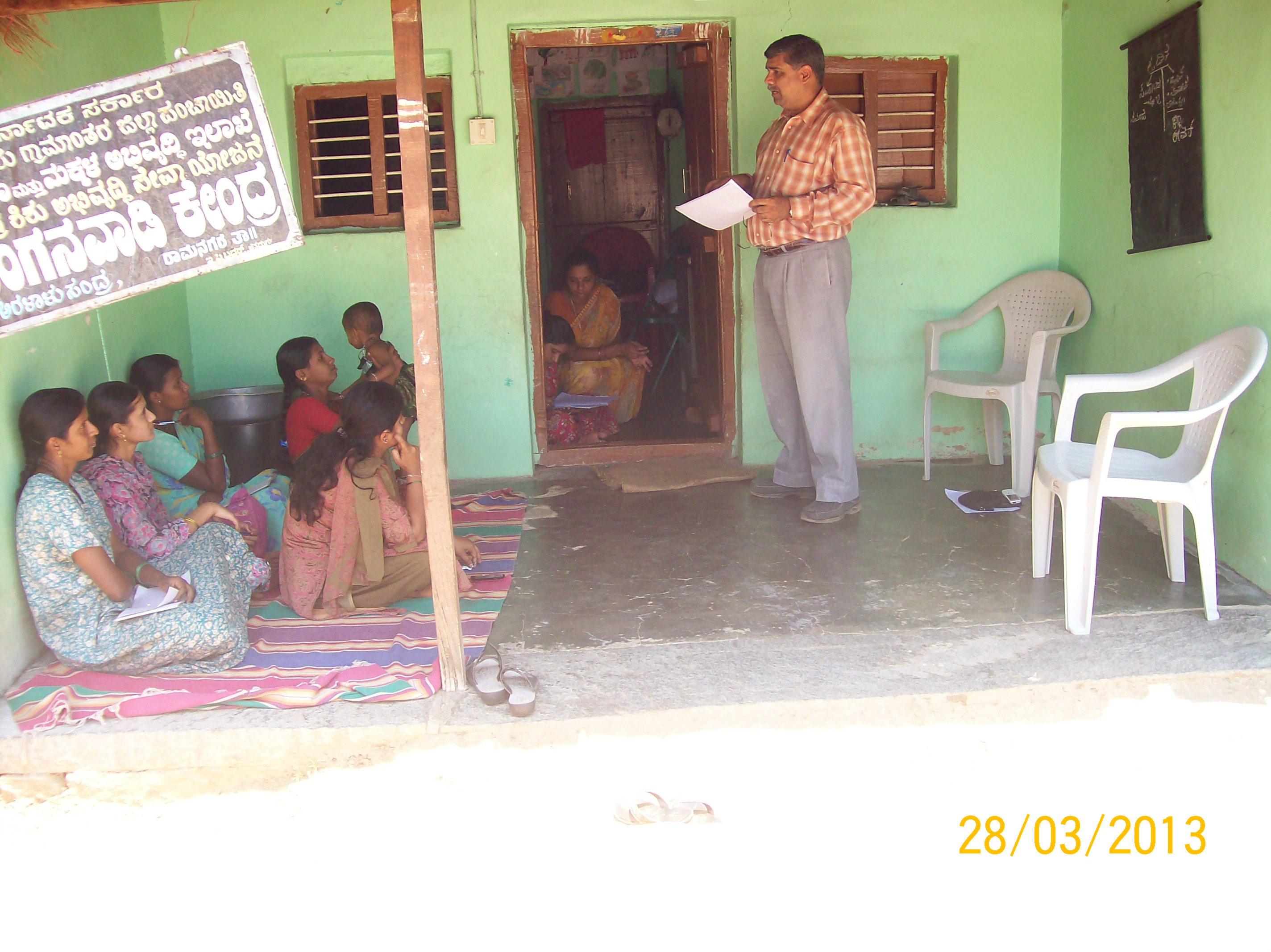
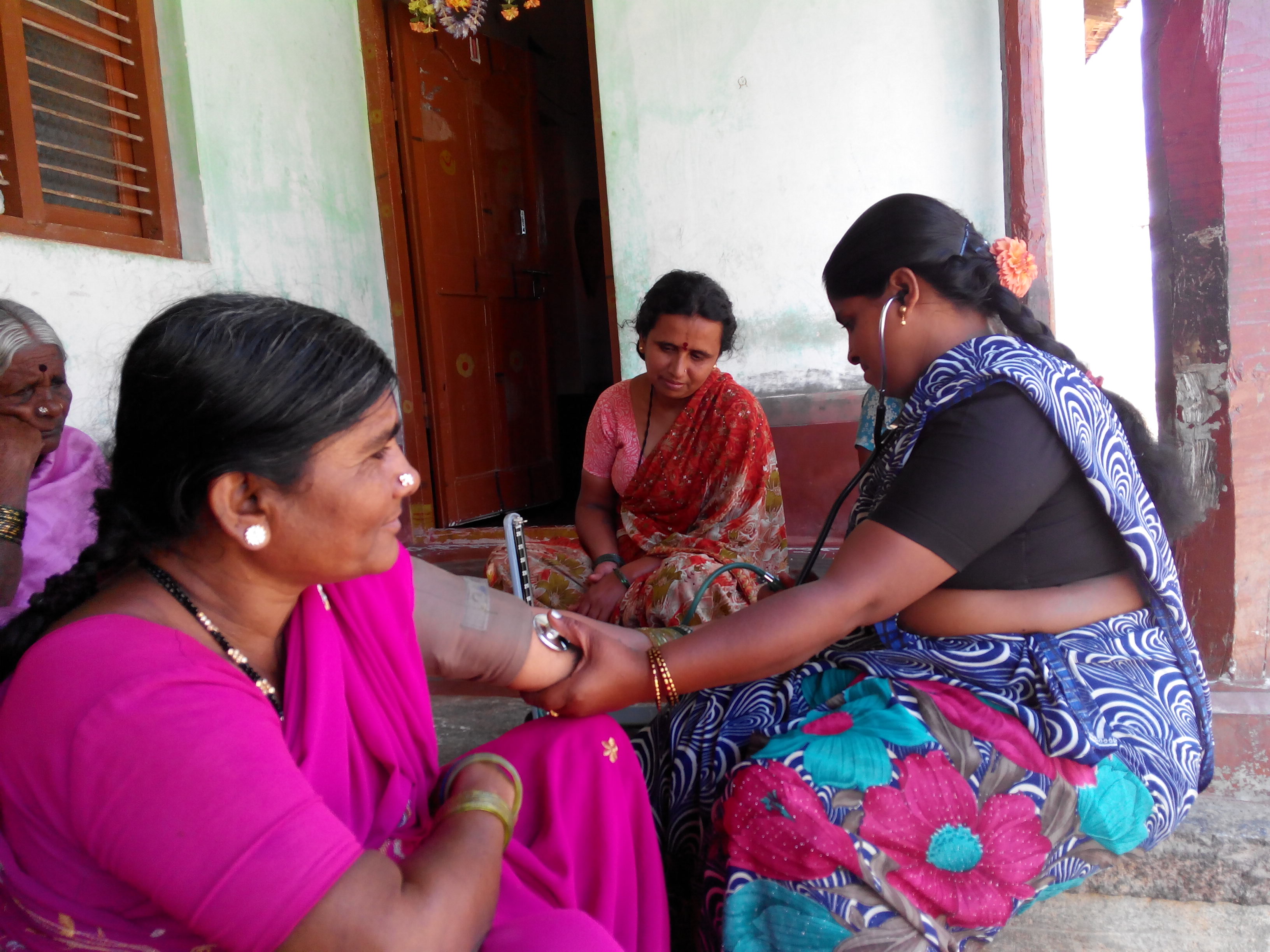
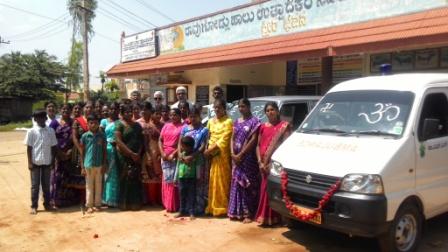
Jpeg
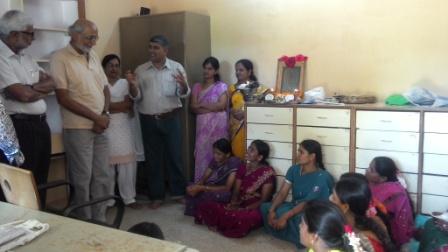
Jpeg
Imparting education through the SCR system:
The Bengaluru group had around 8-10 trained practitioners familiar with the SCR. In 2012, we began bi-monthly sessions with the Mumbai ICR faculty – a golden opportunity to internalize learning. Simultaneously, our supervisors started taking in learners; thus started the journey of Tri-co-ordinate care, which continues with weekly / bimonthly workshops and orientation programmes for young doctors. Presently, we have a team of 30 doctors trained in the system and willing to commit for both academic and community activities for the institute.
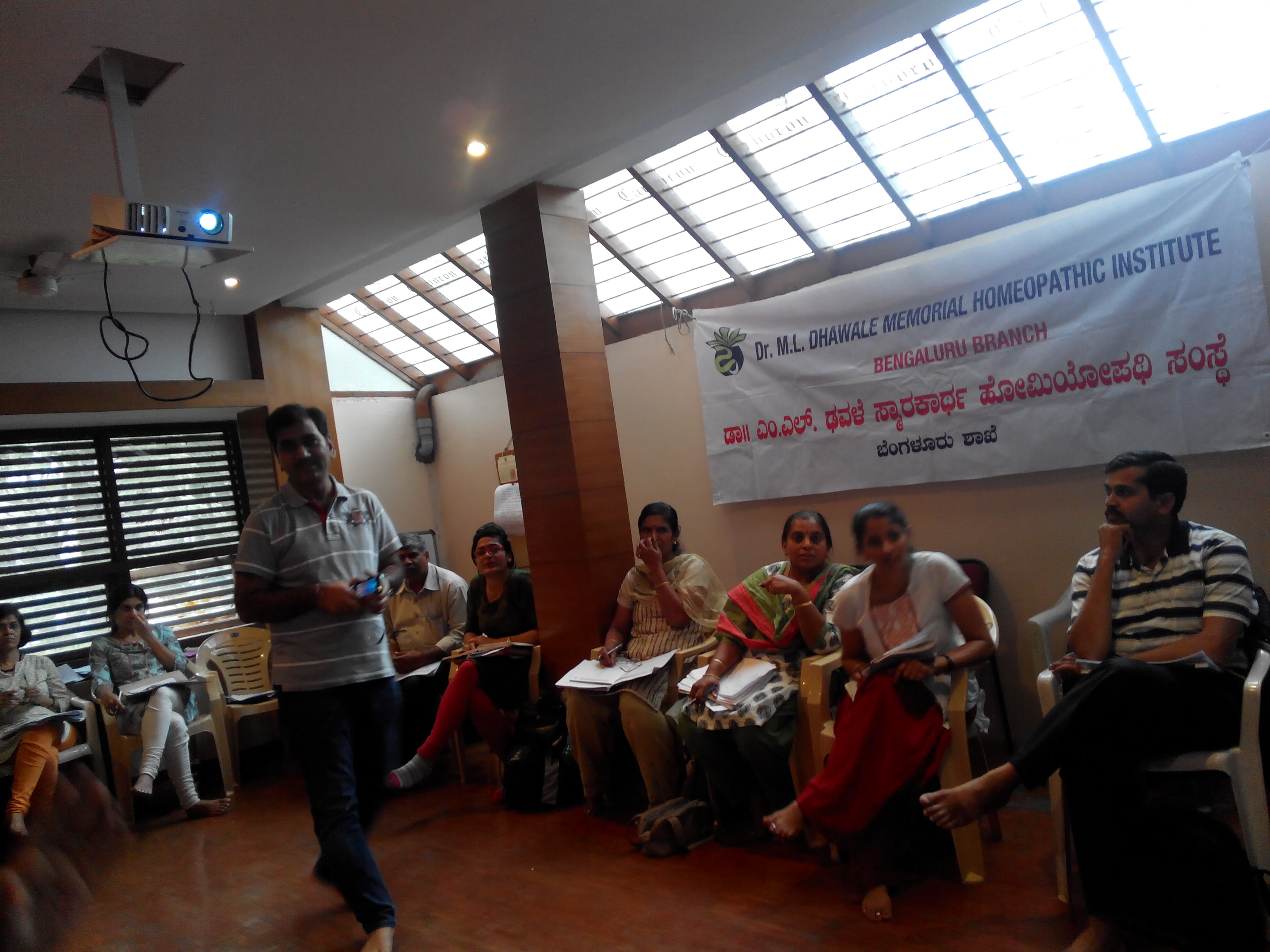
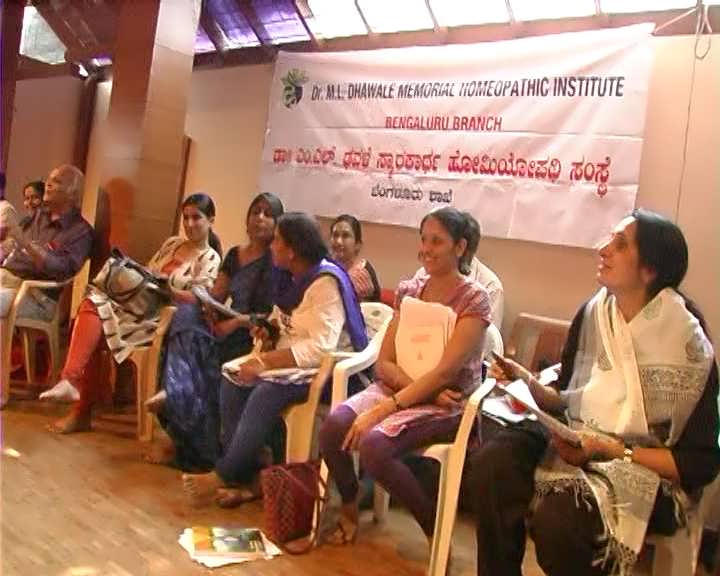 Self-assessment of the status of the team and its functioning:
Self-assessment of the status of the team and its functioning:
The group’s main strengths were the ability to grow within and without, and willingness to work unhindered by personal differences. The differences were largely inter- and intra-personal, partly due to lack of standardised practices. Some prominent issues in these conflicts were lack of maturity, insecurities, fears, and unresolved childhood issues.
The Community Health Services created a focus beyond the self. There were teething problems as the roles were crystallising; moreover, establishing trust and communication took time with the fragile egos and sensitivities of group members. The strength was the SCR which, though still with many grey areas, was gradually becoming a way of life to evolve as better humans and better physicians. Simultaneously, the team focused on community, clinical, and academic areas; this encouraged cohesive functioning.
Slow Learner Project:
The educational NGO Shikshana Trust, functioning in our field zone, is run by a team of USA-returned software engineers. They have adopted 187 schools in the Kanakapura taluk for helping teachers and students with materials, training them, and equipping schools with infrastructure. After about two years, they realised that some students in every school did poorly despite help and were dropping out. The trust approached us for help as they felt Homoeopathy will not harm.
Our team knew about the EMR project on learning disabilities completed by the Mumbai team (10). We decided to try a similar pilot project in schools where we had an outpatient base, CHVs in place, and established goodwill. The Vaderahalli, Thotimanadodi, and Gabaddi government schools were selected – all within a range of 3-5 km.
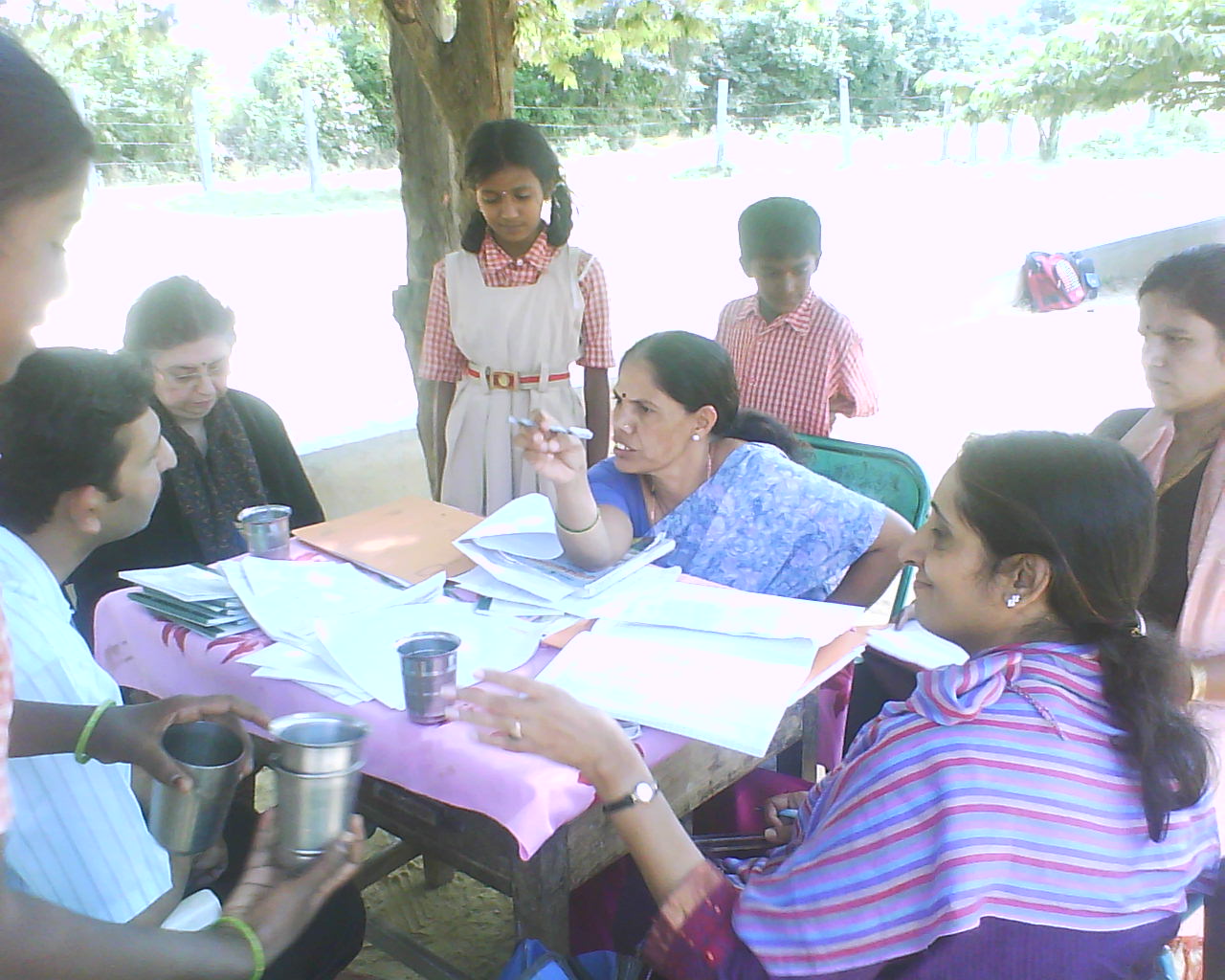

Planning and Consultation
The research/academic heads of the Mumbai faculty conducted orientation sessions and gave inputs on the processes to be followed by collaborating and networking. They also taught us the skills and competence needed for case receiving and processing in this section of the community. The difficulties were many – it was not easy to get permission to dispense Homoeopathic medicines, the schools initially were resistant to have Homoeopathic physicians on their premises, case taking required us to visit the children’s homes with the CHVs. Much later, when they saw our sincerity and the improvements in the children, did the process become smoother.
Gathering the team
The team formed comprised:
- Homoeopathic physicians under training in the SCR system, with some additional guidance in case receiving in slow learners
- Community health workers – an interface between treating physicians and the community
- A team of Shikshana Trust volunteers
- The teachers and principals of the schools
The Challenges –
- Community work – a first-time experience for many physicians. The local language was also not familiar.
- The team relied on academic performance and IQ scores to find the sample size. They were unclear about the objective criteria for the type of learning difficulties and did not screen the reading, writing, comprehension, maths, and perception.
- The areas to be assessed for clinical diagnosis for slow learners / learning disorders / ADHD were unclear. Though the seminar at Baroda on learning difficulties did impart some clarity, it was not attended by all the team and the data was inadequate, so we fell short of accurate data collection.
- No structure was available for the follow-up analysis or tests at regular intervals, in all the 6 areas of learning. There was neither a uniform methodology for different grades, nor a control group. The IQ tests were conducted by psychology students from Bangalore University and a detailed assessment report was not given.
- All this made objective evaluation of results difficult.
The Challenges in Implementation
- Inadequacies in the screening process, case receiving, and child management
- Often the maintaining factors were the alcoholic fathers, who would not come for case receiving; moreover, their violence at home left inadequate space for learning and self-esteem in the child.
- Inadequate problem definition, not going beyond data collected from the teacher and one of the parents, as the children were hesitant to talk due to a lack of privacy.
- Inadequate work by the team in its case records to define each area e.g. clinical / generals and mind-body / miasm.
- Giving Homoeopathic medicines in government school premises was difficult
The Challenges in communicating the experience of the study
This project was heavily loaded with humanism, but the physicians were not fine-tuned for the screening and documentation required for a research project. The step-by-step processes needed for reporting success stories were achieved to some extent and shared as an article in the Asian Journal of Homoeopathy (11). However, when the research head in Mumbai compiled and completed the data analysis, the required improvements in various areas of reading, writing, comprehension, and results in exams were apparent. We completely lacked the analytical skills, as was reflected in our inadequate follow-up analysis. We also needed to revisit the school several times to collect data that should have been collected in our follow-up.
What gladdened our hearts were the considerable changes seen in the overall functioning of the children and the relief that this brought to the teachers and parents. That Homoeopathic intervention could have such a significant role to play in this progress was a revelation. All the difficulties recounted above paled into insignificance, energized the team, and left us feeling ‘ye dil mange more’ (the heart craves more).
Learnings and Insights
This project did identify our strengths and weaknesses and we did undertake the analysis in as honest a way as possible
The Standardized Case Record: Its Functions
Clinical Care
It was important to first screen children with learning difficulties and identify the slow learners. The only parameters used were teachers’ inputs and IQ testing by the clinical psychologist team. Academically weak children with scores between 70-90 were investigated further. The team could not further qualify LD / ADHD due to a lacked of specific knowledge and skills.
Learner Care
The Clinical Session Evaluation Form was needed weekly for sharing areas of sensitisation towards the pain of a child struggling in school and with alcoholic fathers and poverty.
In one interesting case study, I was unable to handle the violence of an alcoholic father and almost wanted the mother to leave him and take the kids away. However, my team and the CHVs educated me that this is normal in most of the villages and it’s not possible to break the families as they will live like this. Having realised my misplaced sympathies, a lateral solution was suggested to the mother who decided to lock the rooms when the father came home drunk, as this would save the children from being hit or abused. She realised the impact it had on her children’s self-esteem and so was willing to work this resolution by herself. Needless to say, the child improved with the constitutional medicine and was able to get above 50% marks, participate in sports and dance, and became a lot more cheerful, as shared by his friends and teachers.
The issues of alcoholism and the impact of violence on the children often left the team helpless and created difficulty in retaining one’s sensibility and thus in case receiving. We needed to find lateral solutions to this problem to help the children.
Knowledge Care
Physicians had to know – 1. The child’s socioeconomic situation, 2. The various components and parameters for slow learners, 3. The maintaining factors for lowered self-esteem and performance, 4. The scope and limitations of Homoeopathy and 5. Knowledge of case management and follow-up with proper criteria and assessment before and after intervention.
The team could constantly interact with the children in school premises and help mothers to support their child at home. These measures helped boost the children’s self-esteem and performance.
Group Care
Regular meetings were needed for these groups –
- The team of physicians to understand the difficulties in the processes and documentation of results. This was achieved partially, with many grey areas, as the ability to integrate the SCR was inadequate, as it was not practised in personal clinics
- Teams of CHV who needed weekly meeting to ensure medicines were taken
- Teams of teachers and principals who needed inputs on the progress of the cases
EMR Multicentric Project on Scholastic Difficulties
As the slow learner project entered the concluding phase, another challenging opportunity visited us in the form of an AYUSH-sponsored EMR Multicentric project on Scholastic Difficulties. In fact, this was an amalgamation of the earlier EMR project on Learning Difficulties and the Bengaluru project on slow learners. But this time, the project was going to be quite different. It was going to be rigorously planned and faithfully implemented without any laxity.
Preparation
- Identifying government schools in the city as against the earlier rural areas.
- The school principals and teachers to be oriented to the project.
- Sample size of around 125 children from four schools, necessitating the screening of many more children
- Identifying the team including doctor, clinical psychologist, remedial educator, paediatrician, ENT surgeon, and ophthalmologist
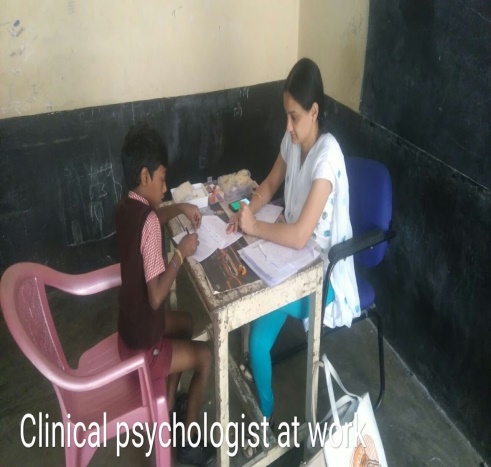
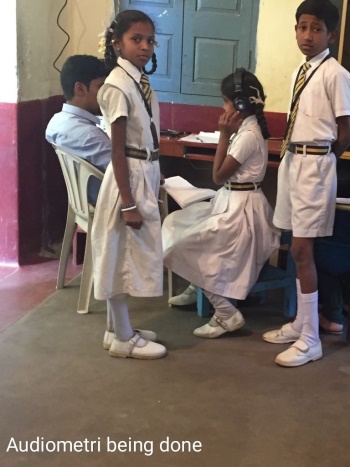
Training – an on-going process –
- For all the screening doctors – starting with a workshop by the Mumbai arm, the training continued through periodic meetings / discussions with the Mumbai faculty to understand the needs and methodology. The Mumbai faculty guided us through every step, from screening to finalising the sample and case definition and documentation.
- Orientation of parents and teachers
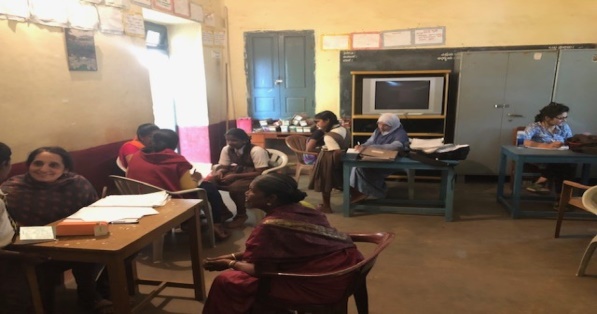
Training on the job
- The team of about 16 physicians had to be sensitive to the working hours of school and parents. Many parents were daily wage workers or worked in the unorganised sector and could only manage few visits.
- Teachers also had to ensure children were not missing classes.
- Screening needed patience, perseverance, and receptivity to ensure that the standard processes were adhered to, especially in screening. This needed qualitative and quantitative detailing in the given time frame.
Use/misuse of the SCR
The primary need was to prepare physicians for case taking in a lower socioeconomic group while avoiding the pitfalls experienced earlier. Six physicians who were either SCR test pass or at the submission stage were members of the team. It needed paying attention to hard data (physical generals, birth history, medical history, family history). The life space needed an understanding of the world of the child, her / his reactions and responses to family school and society, hobbies and how she / he was coping and adaptation to learning difficulties
Re-visit case-taking and observations
– The team had to:
Fill up the clinical session evaluation form to focus on missing important data.
Interview the parents, teachers, and siblings (if in the same school), to understand the child’s world.
Utilize their observations to arrive at the final totality and remedy appreciation.
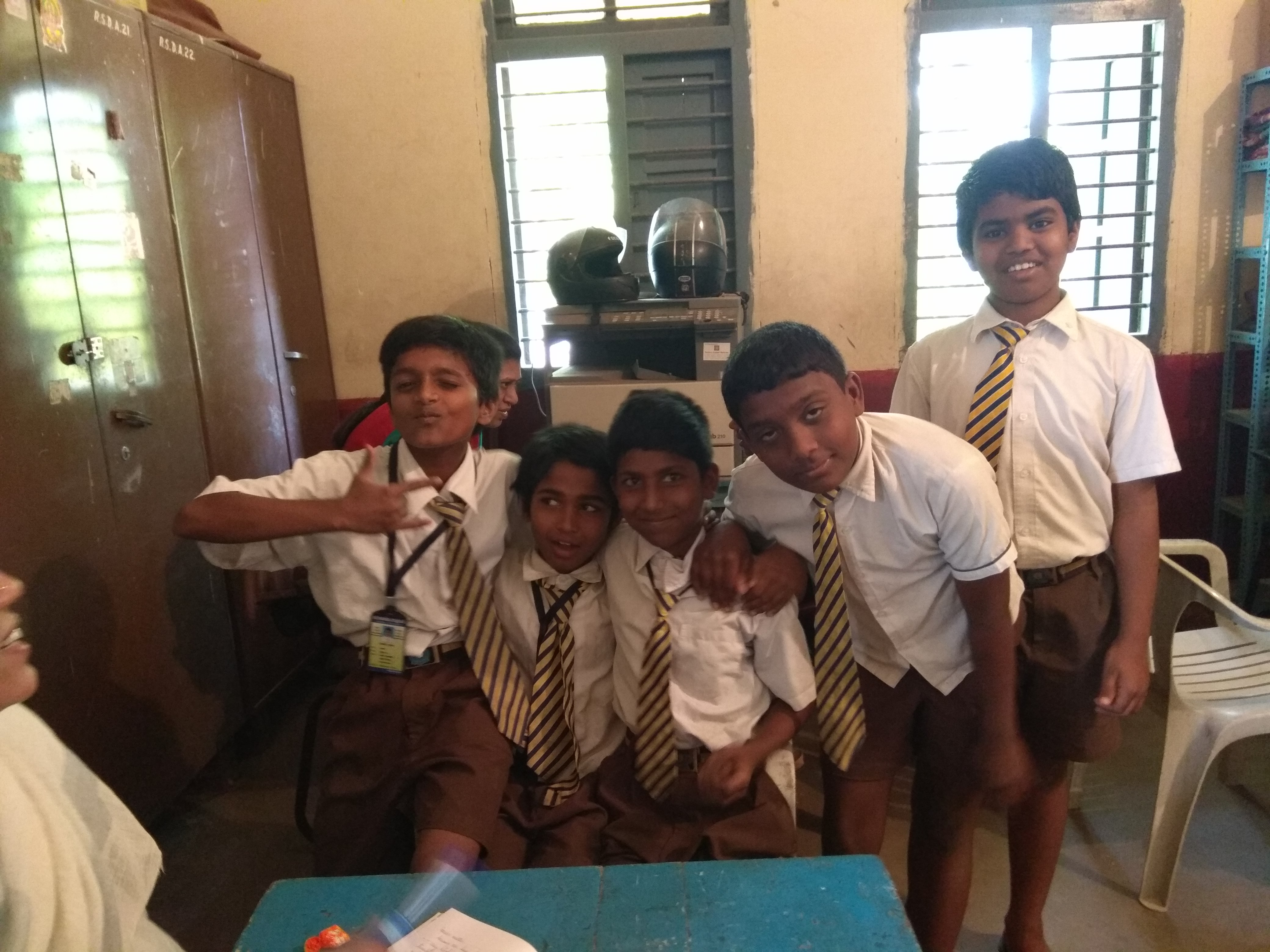
Documentation
This was constantly challenged. We naturally rely on qualitative data and the project needed attention to quantitative data at all stages and in all forms – screening, examination by different faculties of psychologist / ENT / paediatrician / ophthalmologist / remedial educator’s screening, baseline assessment, and three- and six-monthly assessments. All forms were to be completed, absent children revisited, and all documents filed as per the need of the project, with constant guidance by the Mumbai faculty.
Picture 11 (set of 3)
Processing
This needed integrating the person behind the learning difficulty and paying attention to characteristic expressions of the mind and body. Three forms – Life space table, Conceptual Image, and Essential Evolutionary Totality (EET) – gave clarity to the construction of the totality and the final approach. The final remedy with D/D had to cover the genesis, evolution, and expressions of the patient, the portrait of the remedy, the miasmatic understanding, and the Problem definition and resolution. As it was a control study, we administered placebo for the first six months and now await the results after administering the similimum.
Distant supervision
Without the support of many people, none of these processes could have taken place. Almost daily, our Mumbai supervisors were going through five SCRs (100 pages scanned and sent on WhatsApp, something new for us and for them) to ensure that as a team we pool in our thoughts before finalising the similimum. Our physicians completed a record 120 cases in 3 months! Weekly reporting ensured constant support and guidance at every stage (truly a demonstration of intense commitment to responsibility). Some important learning from this experience was the importance of case receiving, paying attention to hard facts and understanding the world of the child as it interacts with its family-school environment. Every page in the SCR speaks of the child we are treating as well as the emphasis on totality that requires us to properly use the repertory so that we avoid prejudice. We learn how attributes evolve and express in each remedy so that we can differentiate remedies.
Learning of physicians in the EMR team:
The distant supervision brought about some very important insights as reported by the team:
Dr Anjum (our youngest entrant – 2 years’ training) – It was important to receive the case and pay attention to the child’s language and hard facts. While working on the SCR, we felt that each page talks about the remedy and helps in differentiating.
Dr Anitha (has completed the Orientation programme, an old student of Dr Phansalkar and committed to SCR certification) – It was important not to miss any symptoms in the totality and to transfer all the data into the RS and PDF as that allows us a range of remedies to differentiate and expand the repertoire of remedies.
Dr Rohina (MD (Hom) from MLDMHI, Palghar, SCR-certified and experienced physician) – Understanding the child in her / his world of family, society, and school and responses and adaptation to learning difficulty allows us to understand the genesis, evolution, and expression of attributes and expression and match it with the portrait of the remedy.
Dr Babitha (in her final leg of certification and with a sound foundation of SCR practice) – Observations and understanding the child’s world allowed finer differentiation of remedies, while the EET, and Mental State Record tools gave value to understanding the characteristic attributes and expressions.
Dr Savitha (a senior physician and one of our earliest SCR-Certified trainers and practitioners) – Each page of the SCR actually talks to you; we could integrate the child from his predisposition to disposition to expression and miasm. Totality and remedy are clarified by adhering to the discipline of forms.
Dr Latha – For the first time, this EMR team from Bangalore could work with enthusiasm and commitment and discipline about processes due to the common goals and guidance and time-bound activity. The SCR methodology was being put into action by a team, resulting in excellence. It makes us believe in ourselves, that the Bangalore group will be able to travel on its path from primary to tertiary care.
Conclusions
We are on the path, the end is not yet in sight, but the path travelled has been memorable because it has brought home the following:
- Standardized Clinical Action: its true meaning
An evidence-based, multi-disciplinary integrated management. The study defines care of self, patient and learners through a series of methodical processes that direct our otherwise uncontrolled and unexplainable actions. This helps us to achieve greater objectivity and scientificity while retaining the sensitivity needed for CARE
- What does it take to deliver Standardized Action on the field?
It needs the SCR, which integrates clinical processes and Homoeopathic approaches. It begins from the day we step into the school and the entire methodology is scientifically done without losing humanness and sensitivity
- Institutional Transformation: When do Individuals become a Team?
When we align our individual thinking, feeling, and action with a larger purpose and common goals, we become aware that together we can travel the road less travelled. When standardised scientific processes make us disciplined and we develop a deeper mindfulness of our existence from day to day, we reach meditative states with this awareness and realise we are but a small part of the macrocosm.
- Homoeopathic Research: A culmination of all of the above
This process allows alignment of a team to standardised clinical action and scientific methodology to understand the efficacy of our system. It also allows a systematic enquiry to describe, explain, predict and control the action of our remedies. Why do we do this? This allows Homoeopathy a say in public health.
Acknowledgements
We gratefully acknowledge the funding received from the Ministry of AYUSH for the EMR Project on Scholastic difficulties which allowed the team to work together.
But for the constant guidance of the Research Dept., MLDT, the conversion of raw experience into an academic paper was impossible.
The contributions of the Shikshana Trust, Govt Officials of the concerned Depts., Management, Principals and teachers of Schools, Parents and Children have enabled us to learn invaluable lessons from the community.
The Homoeopathic health-care team has allowed all the learnings to be consolidated and presented.
References:
- Kasad KN: Standardized Homoeopathic Case Record-Standardized Homoeopathic Practice in Dhawale M. L. (Ed) ICR Symposium Volume on Hahnemannian Totality, Dr. M. L. Dhawale Memorial Trust, 2003
- Dhawale ML: ICR Standardized Case Record-Homoeopathic Medical Education and Training: An Instrument for Research and Audit in Perceiving 1 M. L. Dhawale Memorial Trust, 2000
- Kapse A; ICR Operational Manual. Dr. M. L. Dhawale Memorial Trust, Second edition, 2017
- Tiwari NL, et al: Defining scope and clinical approach for homoeopathic management of Diabetes Mellitus, Indian Journal of Research in Homoeopathy, Volume, No. 3, 2008, pg. 28
- Tiwari NL, et al: A journey through research on role of homoeopathy in DM, Asian Journal of Homoeopathy, Volume No. 1, 2008, pg. 44.
- Tiwari NL, et al: Exploring Role of Homoeopathy in DM, Asian Journal of Homoeopathy, Volume No. 3, 2008, pg. 27.
- Tiwari NL, et al: Establishing the Efficacy of Homoeopathy in the Management of Diabetes Mellitus Type 2, Asian Journal of Homoeopathy Volume No. 1, 2009, pg. 36.
- Patel MK, et al: Efficacy of Role of Homoeopathy in the management of Acute diarrhoeal disorder, Indian Journal of Research in Homoeopathy 2009 Vol. 6
- Goda CR, et al: Efficacy of Role of Homoeopathy in the management of Scabies, Indian Journal of Research in Homoeopathy 2009 Vol. 6
- Dhawale KM, Tamboli MP, Katawala MY, Tambitkar NN, Tamboli PP. Use of homoeopathic remedies in the management of learning disabilities. Indian J Res Homoeopathy 2014; 8:87-94.
- Devarajan L, et al: Beneficial Impact of Homoeopathy in Slow Learners: A Pilot study. Advancements in Homoeopathic Research: 2016, Vol. 1, No. 1
*Based on a presentation “CONCEPT AND PRACTICE OF TRICOORDINATE STANDARDIZED CARE: THE ICR WAY” by Drs Kumar Dhawale, Prashant Tamboli, and Latha Devarajan at the KQHDA CONFERENCE, Bengaluru
8th – 10th September 2017
